10 Hass Avocado Growing Tips You Should Know!
- April 5, 2024
- 1 comment
Growing Hass avocados can be a rewarding experience, providing you with a steady supply of one of the most popular avocado varieties. Whether you’re a seasoned gardener or a novice, understanding the specific needs and care requirements of Hass avocado trees is crucial for a successful harvest. Here are detailed and informative tips to help you grow healthy Hass avocado trees.
What is Hass Avocado?
The Hass avocado (Persea americana ‘Hass’) is the most popular avocado variety worldwide, known for its distinctive pebbly skin that darkens as it ripens, and its creamy, nutty-flavored flesh. Originating from a seedling in California by Rudolph Hass in the 1920s, this cultivar thrives in warm, well-drained environments and is celebrated for its nutritional benefits, including healthy fats, fiber, and essential vitamins. Characterized by vigorous growth and substantial fruit production, the Hass avocado is a Type A variety, essential for effective cross-pollination in avocado cultivation, making it a staple in both the agricultural and culinary sectors.
List of Hass Avocado Growing Tips:
- Understanding the Hass Avocado
- Climate and Location
- Soil Requirements
- Planting Your Hass Avocado Tree
- Watering Schedule
- Fertilization and Care
- Pruning
- Pollination
- Harvesting
- Monitoring and Maintenance
1. Understanding the Hass Avocado
Understanding the Hass Avocado involves appreciating its distinct characteristics and growing habits. Known for their creamy texture, rich nutty flavor, and unique pebbly skin that transitions from green to purplish-black upon ripening, Hass avocados stand out in the avocado family. As a Type A variety, their flowering pattern plays a vital role in the pollination process, affecting fruit production.
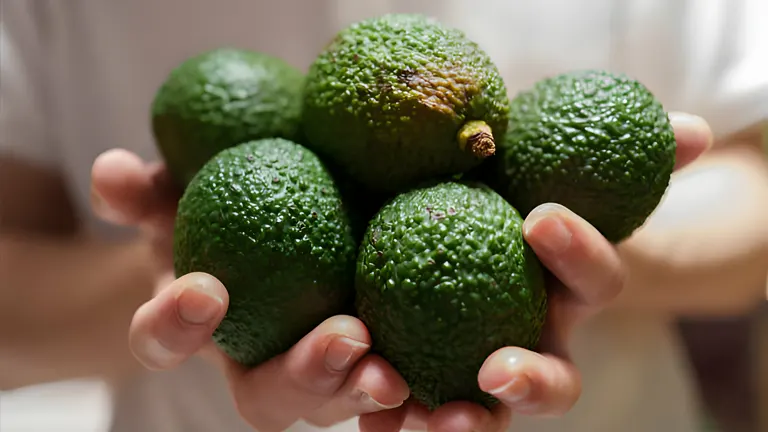
When grown in containers, Hass avocado trees can reach up to seven feet, but when planted in the ground, they can soar to 30 feet, showcasing their impressive stature. On the tree, the avocados exhibit green skin, which transforms to a dark, nubbly purple-black after harvest. These fruits are notably heavy, typically weighing between 200-300 grams each. Remarkably, with proper care and optimal growing conditions, a Hass avocado tree can have a lifespan ranging from 200 to 400 years, contributing to its legacy and popularity in avocado cultivation.
| Type A Avocado Varieties | Type B Avocado Varieties | Both Type A and B |
|---|---|---|
| Hass | Fuerte | Wurtz (Little Cado) |
| Pinterton | Bacon | |
| Lamb Hass | Zutano | |
| Carmen Hass | Sir Prize | |
| Gwen | Joey | |
| Reed | Winter Mexican | |
| Mexicola Grande | Brogdon | |
| Stewart | Wilma (Brazos Belle) | |
| Holiday | ||
| Pryor (Fantastic) | ||
| Opal (Lila) |
2. Climate and Location
Hass avocado trees flourish in environments that provide bright, direct, and unfiltered sunlight, requiring at least six hours of sun daily, though they can manage slight shade. Optimal fruit production occurs when the foliage receives abundant light. These trees prefer warm climates with moderate humidity, thriving in temperatures between 60°F to 85°F, akin to the conditions found in Southern California, their preferred habitat.
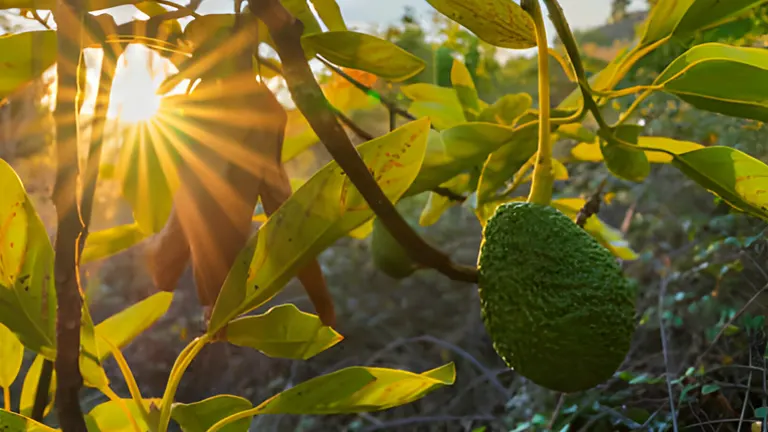
While mature Hass trees can endure temperatures as low as 28 degrees Fahrenheit, younger trees are more susceptible to cold damage. To prevent harm from frost and strong winds, it’s crucial to plant them in protected locations. The key to successful Hass avocado cultivation lies in providing ample sunlight and a warm, sheltered environment.
3. Soil Requirements
Hass avocado trees require well-aerated, loamy or sandy soil with a pH level not exceeding 6.5 to thrive. Good drainage is paramount, as the tree’s feeder roots are shallow and prone to damage in waterlogged conditions, leading to root rot.
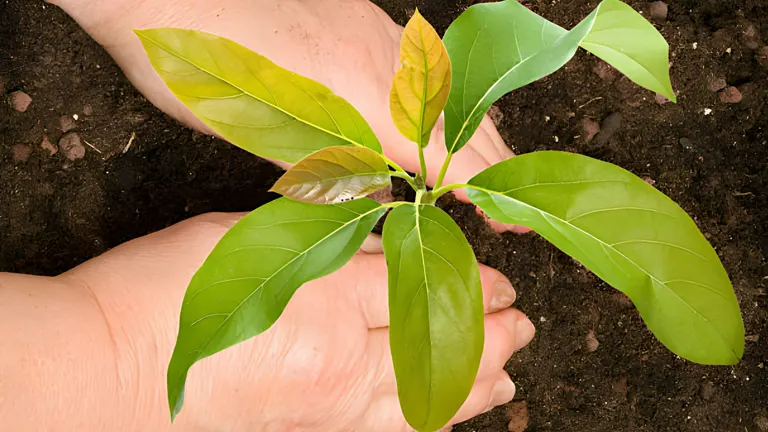
While heavy clay soils are unsuitable for Hass avocados, they can still be cultivated in such areas by constructing a raised bed or mound, ideally 3-5 feet in diameter, to enhance drainage and provide the root system with the environment it needs for healthy growth.
4. Planting Your Hass Avocado Tree
When planting a Hass avocado tree, it’s crucial to start with a grafted seedling from a reputable gardening center, as pits from store-bought avocados are unlikely to yield successful results. The ideal planting period is between March and June when the soil is warm. Select a location protected from wind, with excellent drainage and full sunlight. Clear a 10-foot area around the planting site of any turfgrass, weeds, or debris.

The hole should be about three times the diameter and three to four times the depth of the seedling’s container, but avoid planting too deep to accommodate the tree’s shallow root system. Carefully remove the seedling from its container, placing the root ball slightly above the surrounding soil level in the hole, then backfill and gently tamp down the soil without adding fertilizer or compost, allowing the tree to adapt to the native soil.
5. Watering Schedule
For a newly planted Hass avocado tree, regular watering every two to three days is essential, but always check that the soil isn’t overly moist before adding more water.

As the tree matures, the watering frequency can be decreased to once a week, ensuring the top two inches of soil remain moist but not soggy. Establish a consistent watering schedule, adjusting for more frequent irrigation during hot, dry spells, and reducing it in winter or during rainy periods to prevent waterlogging, thus promoting healthy growth and development of the tree.
6. Fertilization and Care
Hass avocado trees require more than just the traditional nitrogen, phosphorus, and potassium found in standard fertilizers; they also need essential micronutrients like zinc and boron for optimal growth. A zinc deficiency in Hass avocado trees is noticeable by yellow patches on the leaves, while nitrogen deficiency often presents as pale leaves with yellow veins.
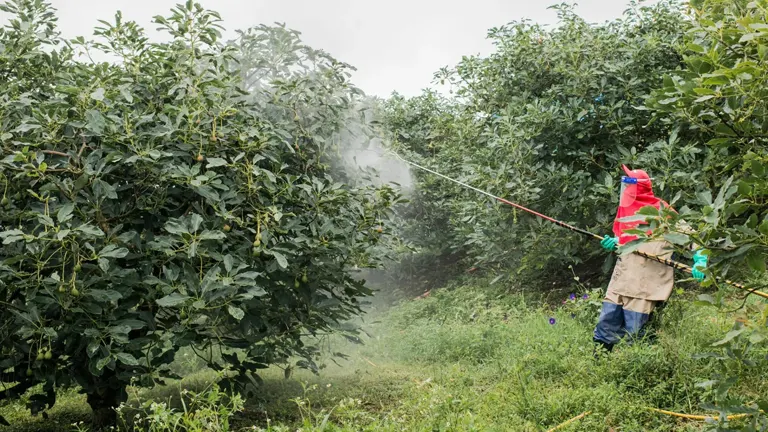
New trees don’t require immediate fertilization, but starting one year post-planting, it’s beneficial to apply about one ounce of a balanced, slow-release fertilizer monthly from spring through fall, catering to the tree’s shallow root system. Ensure the fertilizer includes not just NPK but also trace elements like zinc and boron. Regular monitoring for pests, including mites and borers, followed by timely intervention, is crucial to maintain the tree’s health and productivity.
Recommended Product:
7. Pruning
Pruning Hass avocado trees is generally minimal, focusing on removing damaged limbs, controlling height, and shaping the tree. It’s essential to eliminate any growth below the graft joint, as these sprouts come from the rootstock and won’t bear Hass avocados. Pruning terminal buds can stimulate new lateral branch growth, while trimming the tallest branches encourages the tree to expand horizontally rather than vertically.
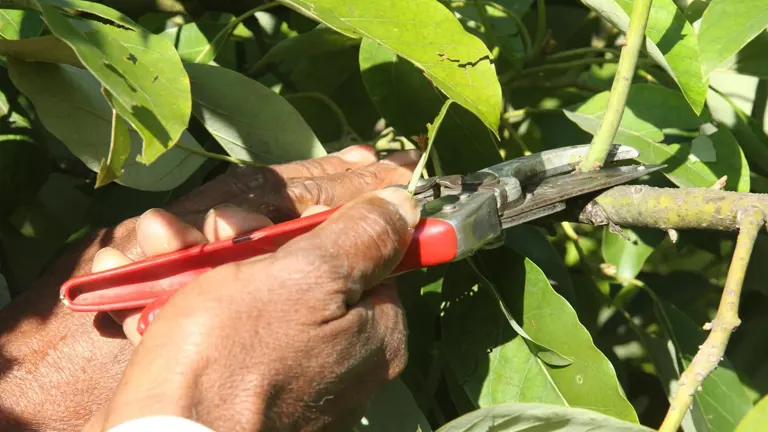
Avoid heavy pruning to prevent reducing fruit yield. For young trees, prevent sunburn by applying a mix of latex paint and water to the trunk. The optimal pruning period is during winter dormancy, avoiding cutting past February, to ensure the tree is prepared for the growing season without risking new growth damage. Prune after the harvest to remove dead or diseased wood and improve sunlight access and air flow, setting the stage for healthy growth and productivity.
8. Pollination
Hass avocado trees, while self-fertile, see improved fruit set and yields through cross-pollination, especially with a Type B avocado variety planted nearby. These trees exhibit a unique flowering behavior known as ‘A’ type, where their flowers open as female in the morning and then as male in the afternoon of the next day, facilitating self-pollination to an extent. However, for a more abundant harvest, introducing a ‘B’ type avocado tree, such as Zutano, which has a reverse pollination schedule, can significantly enhance cross-pollination efficiency.
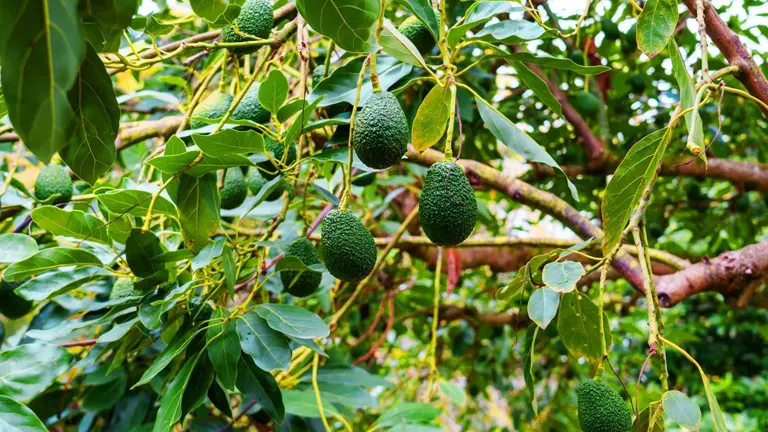
This complementary flowering pattern between the two types, where Type B’s flowers are female in the afternoon and male the following morning, optimizes pollen exchange and is most effective at around 75 degrees Fahrenheit, thereby boosting overall pollination success and increasing the harvest yield of Hass avocado trees.
9. Harvesting
Hass avocado trees begin bearing fruit around five years of age, with the avocados ripening only after being picked from the tree, so it’s best to harvest them as needed.
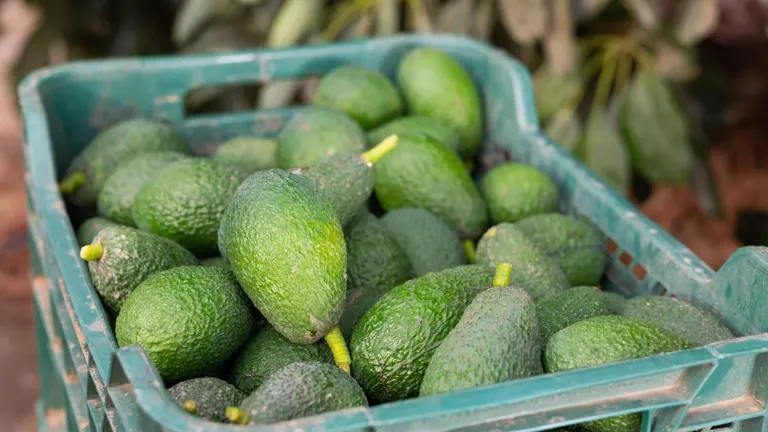
Once harvested, leave the avocados at room temperature to ripen, which can take from one to three weeks, during which they will soften and their skin will turn a dark purple-black color. When they reach a mature size and their skin darkens, it indicates they are ready to be picked. After picking, let them ripen indoors; they should soften evenly without shriveling, retaining a rich flavor, and can then be stored in the refrigerator for a few days to maintain freshness.
10. Monitoring and Maintenance

Regularly inspect your avocado tree for signs of stress, such as yellowing leaves or stunted growth. Address any issues promptly to maintain the health of your tree. Consistent monitoring and proper maintenance are key to a bountiful harvest.
Conclusion
Growing Hass avocados can be a fulfilling endeavor with the right knowledge and care. By following these detailed tips, you can ensure the health and productivity of your Hass avocado trees, leading to delicious homegrown avocados for you to enjoy. Remember, patience and attention to detail are your best allies in successfully cultivating these delightful fruits.
FAQs
- How do Hass avocados differ from other avocado types?
Hass avocados are unique because they ripen post-harvest and can stay on the tree for months after maturing. Nutritionally, they have more fat, contributing to their richer flavor and creamier texture compared to other avocados. - Can the Philippines grow Hass avocados?
Yes, the Philippines can grow Hass avocados, with initial exports sourced from accredited orchards in regions like Davao and Bukidnon, catering to markets like Korea where they are favored for salads and sandwiches. - Are Hass avocados nutritious?
Absolutely. Hass avocados are free from sodium and cholesterol, containing 5 grams of mainly monounsaturated fat per serving, which helps lower bad cholesterol. - Which avocado is tastier: Hass or green?
Hass avocados, known for their bumpy skin that darkens when ripe, are considered tastier than the larger smooth green varieties due to their rich flavor. - What is the preferred avocado variety in the Philippines?
In the Philippines, the purple-fruited avocado varieties are more favored than the green-fruited ones, which are popular in the USA. - What climate suits Hass avocados best?
Hass avocados thrive in warm, temperate climates and can benefit from daily consumption due to their nutrient-rich profile. - Why did Hass avocados gain popularity?
Their popularity soared as Latin dishes became mainstream, introducing avocados to a wider audience and showcasing their culinary versatility. - Should avocados be refrigerated?
Unripe avocados should be kept at room temperature to ripen. Once ripe, they can be refrigerated to prolong freshness. - Can eating too much avocado affect cholesterol?
Moderate consumption of avocados contributes positively to cholesterol levels, thanks to their fiber and monounsaturated fats, enhancing heart health. - How long do avocados last in the fridge?
Whole avocados last 1-2 days in the fridge for optimal freshness, while cut avocados can last up to three days if stored properly. - Is brown avocado safe to eat?
Yes, brown avocado is safe to eat, though it may have a slightly altered taste. The browning is similar to the oxidation process in apples and doesn’t signify spoilage.
We hope you found these Hass avocado growing tips helpful! Do you have any avocado-growing experiences or tips of your own to share? We’d love to hear from you in the comments below. Share your thoughts and join the community of avocado enthusiasts just like you!

David Murray
Forestry AuthorI'm David Murry, a forestry equipment specialist with a focus on chainsaw operation. With over 13 years of experience, I've honed my skills in operating and maintaining a wide range of machinery, from chainsaws to log splitters. My passion for the outdoors and commitment to sustainable forestry drive my work, which emphasizes safety, efficiency, and staying updated with industry advancements. Additionally, I'm dedicated to sharing my expertise and promoting environmental awareness within the forestry community.

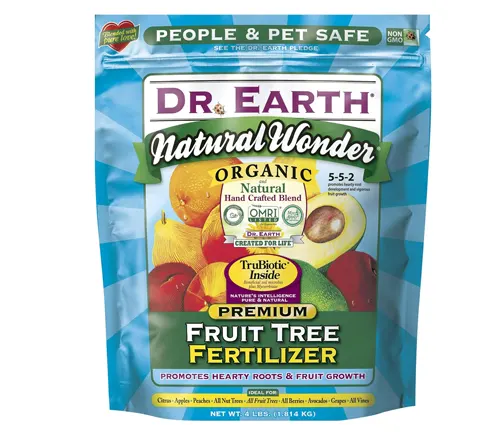


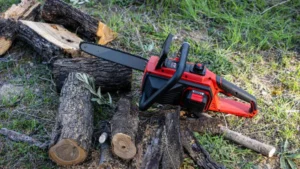







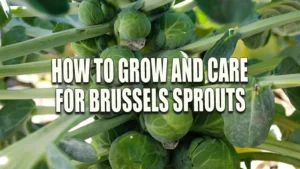

Thank you, David. I began cultivating Hass avocados last week and am hopeful for a successful outcome.
Mike
April 7, 2024 3:23 am